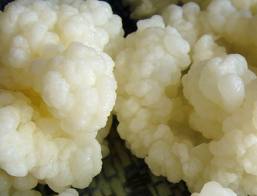“Cultured friends” to Boost Health and Beauty
Insomnia symptoms will decrease and overall energy will skyrocket. These are just some of the endless benefits of this new super food we call “Cultured friends”.
Many western cultures have become obsessed with cleanliness and stamping out all forms of bacteria, but what we have to understand is that all bacteria was not created equal. To create a happy, healthy internal environment, you need to ensure you pay attention to the good and bad bacteria balance, and ensure you are consuming and exposed to good bacteria daily.
The whole bacteria craziness really took off in 2003, when the fear of bird and swine flu swept throughout the world. It began an era of hand sanitising and using alcohol wipes, the marketing increased and sales increased. Face-masks in some areas of the globe become a daily accessory like the Louis Vuitton handbag. In particular situations such as; hospitals, planes, and child care facilities, hand washing and sanitising has been shown to be the most effective way to stop the spread of disease. In hospitals especially, it is one of the most effective ways to stop contraction of bacteria borne illnesses. However; in day to day life there is now an overuse of sanitising products.
Many people are now starting to rethink the current paradigm of constant hand sanitising and using alcohol wipes. The Hygiene Hypothesis is beginning to gain some traction. Many believe that this constant over sanitising has led to an increase in anti-inflammatory disorders and autoimmune disease. The basic belief behind the Hygiene Hypothesis is that our body chemistry has been manipulated by sanitising and prescription drug use, so much so that our micro flora, on and in our bodies, has changed. Our genes have not caught up yet in order to protect us from this ever changing environment.
The decrease in friendly bacteria likened to “old friends” has led to many diseases, which are driven by high inflammation. Your formative years are essential for immune system function: this is when a process called “acquired immunity” is taking place. Your immune system is exposed to antigens, your body attacks them, and antibodies are formed, and the acquired immunity lasts a lifetime. Your lymphocytes will always remember a specific bug and attack whenever they become in contact. Acquired immunity is clever and has always been able to tell the difference between good and bad bugs. Ways in which you can naturally acquire immunity are exposure though active ways such as nose picking, nail biting, playing in the dirt (Green Play), as well as exposure from being around other people with various conditions such as chicken pox and measles.
One recent study showed a link between nose picking and consuming the mucous, and a stronger immune system. The study concluded that nose picking might serve a purpose and may in fact be good for young children, and could possibly be a natural human instinct to help with acquired immunity. The thoughts are that the small amount of bactericides in the crusty mucous might be enough to trigger an immune response in the gut, but not overload the digestive tract.
Green play is a push to get children outside and in the dirt, whether gardening, or just playing and having fun. Many organisations, such as play Australia, are promoting the benefits of Green play for the younger generation. The message is clear: “let your kids play in the dirt and don’t despair about the mess”. Coming into contact with the dirt, and billions of symbiotic bacteria in the soil helps to increase your child’s own bacterial external and internal balance, which strengthens your child’s immunity, and lessens the risk of becoming susceptible to disease and allergies.
Other day to day aspects that can help with creating a friendly environment for good bacteria are things such as using natural materials for clothes and household items. Feathers and Sheep’s wool for bedding has been shown to have high concentrations of Lactobacillus plantarum, these friendly folks have been shown to help with allergy conditions such as eczema and asthma.
As you age, it is still important to ensure you are getting beneficial bacteria in your environment and food daily. Your gut will constantly be turning over bacteria and excreting it, so keeping up with this is essential to good health. The modern lifestyle can really cause havoc with the intestinal biome with stress, processed sugars, refined carbohydrates, and medication such as antibiotics.
One way to insure you consume your daily allowance of a broad spectrum of friendly yeast and bacteria is to consume cultured foods. This subject is close to my heart, as a practitioner that performs regular stool analysis tests on my clients, I see not only the fall out of having bacterial imbalance in the gut, but I see how dangerously out of balance people’s intestinal tracts really are due to the modern day lifestyle.
The most common Cultured foods I suggest people consume are Kefir, Kombucha, Sauerkraut and Kimchee: you can buy these at local health food stores. You can also grow these little bugs yourself, and get used to making these foods, it will save you money too and it is very satisfying.
Kefir is my beneficial symbiotic bacteria of choice. I have been experimenting with Kefir for a good many years now; I am obsessed with this milky magic mix of symbiotic yeast and bubbling good bacteria. ‘Symbiotic’ is the important phrase here, it means that they have a long-standing relationship and rely heavily on one another. This gives Kefir a head start over the store bought probiotics, as the yeast and bacteria have naturally formed this association and work together as a team. They not only feed each other, but also colonise each other too.
Kefir grains have a complex and intriguing structure of peptides, exopolysaccharides, bacteria and symbiotic yeasts. The grains look like small clumps of cauliflower. When healthy they grow and multiply, often leaving sticky trails, this is the good bacteria thriving, which you also see with the Japanese favorite “Natto”, which is fermented soy beans.
These grains can be added to any type of milk, and left 24 hours to ferment. They can be left up to 40 hours, and now benefits have been seen with this extended period. After fermentation, you strain the Kefir grains and store them for next time. The final product of fermentation gives you a yogurt type consistency with trillions of bacteria and yeast, including lactobacilli and loctococci. It also provides easily digestible amino acids, B vitamins, minerals and vitamin K that are all highly bioavailable. The Kefir is tart and slightly effervescent; this is due to the lactic and acetic acid component, which is essential for good digestion.
Kefir has been used in Russian hospitals for various gut disorders and for other diseases such as tuberculosis, HIV and chronic fatigue. Recent studies have been performed in vitro to examine the many antimicrobial qualities of Kefir. It is touted as anti-fungal, anti tumor, immune modulating, anti-carcinogenic, and antiviral. A study performed in 1993 at the University of Istanbul looked at the antimicrobial effect of Kefir against Staphylococcus aureus, Bacillus cereus, Salmonella enteritidis, Listeriamonocytogenes and Escherichia coli. This study showed significant antimicrobial activity against all four bacterias, but particularly Staphylococcus aureus. When fermented longer than 48 hours, Kefir demonstrated an increased effect against Salmonella. The final results of this study show that Kefir has similar results as some antibiotics; but is much more beneficial for the digestive tract biome.
There is evidence to suggest that the use of antibiotics can alter the bacterial landscape of our digestive tract biome. Studies have been performed to show how certain yeasts and bacteria can alleviate the negative effects of antibiotic use. Species such as Lactobacillus rhamnosus GG (LGG) have been studied in depth. These species can be found in Kefir in great amounts, having a cup of Kefir daily, particularly when on antibiotic therapy, can greatly reduce the negative impacts, and positively improve your digestive tract biome and wellbeing.
Kefir is part of a staple diet in many cultures, as well as having high amounts of calcium and protein; Kefir has also been shown to have immunomodulating capacity. Research published in Canada in 2004 studied the prevalence of IgG and IgA immune globulins when using Kefir in-vitro, the results showed a significant increase in IgA cells in mice from using Kefir. IgA and IgG cells play a significant role in modulating the immune system, consuming Kefir daily may regulate and boost your immune system.
Kefir is easy to make and cheap, first you get the grains; these can be sourced online, or you may also find that your local health food store may gift them to you. Once you have the grains, all you need are a few mason jars, and a 1 liter glass jar. The only ongoing expense is milk; you can use raw cow, sheep, goat, rice, soy, coconut or almond. The possibilities are endless.
Making Kefir
This is the fun part, seeing something grow and thrive, this really gives you an indication of the life giving force of good bacteria and its health producing benefits; it really is ”living food”.
Step 1
Place your grains in a sanitised glass jar, the bigger the better, at least 1 to 2 liters to give the Kefir room to thrive
Step 2
Pour in your milk, leave about an inch to two inches gap from the top of the jar
Step 3
Lay a cloth over the top of the jar and leave to sit in a dark cupboard for 24 to 48 hours, stir with a wooden chopstick a few times a day.
Step 4
Once you have let it develop over the 24 to 48 hours, and it is your preferred consistency, you may strain. This can be done either through a colander with very small holes, or through a muslin cloth, the thicker the Kefir the harder it will be to strain, so you may need to use a wider holed strainer.
Step 5
Now that you have strained the liquid into another glass jar, it is ready to consume. Keep it in the fridge with the lid tight, you will find after a day in the fridge, the flavor will mellow and be less bitter.
Step 6
Your Kefir grains will have grown and multiplied, they should now be kept in a small glass jar, topped up with a little milk; they can be kept in the fridge until you are ready to use them again. Only keep them in the fridge for up to 2 weeks, try and use them weekly to prevent them from going bad. If you need to keep them for longer, then wash them in water and store in the freezer.
Ways to use Kefir
You can have a small cup of Kefir at night to help you sleep, or have first thing in the morning to alkalise and nourish your digestive tract, add to cereal or fruit instead of yogurt.
You can make a mango lassi and use Kefir instead of Yoghurt
Mango Lassi
Serves 1
1 Small Organic Kensington pride Mango
200ml (roughly 1 cup) Kefir
Pinch of Himalayan rock salt
Blend and enjoy
Kefir can also be added to hot spicy food such as curries, this will help with digestion and calm the spice down.
I always add Kefir to starchy foods such as baked potato, the resistant starch in a cooled potato acts as food for the probiotics in the Kefir, and this helps the bacteria and yeast thrive in your digestive tract
Enjoy the Kefir. As it grows you will thrive, and notice the endless benefits of good bacteria on your health and wellbeing.
References
http://www.ncbi.nlm.nih.gov/pubmed/19120493
http://www.hygienehypothesis.com/
http://www.merckmanuals.com/home/immune_disorders/biology_of_the_immune_system/acquired_immunity.html
http://www.sciencedirect.com/science/article/pii/002555648390007X
http://www.garlandscience.com/res/pdf/9780815341468_ch01.pdf
http://www.esciencecentral.org/journals/probiotics-history-and-evolution-2329-8731.1000107.pdf
file:///Users/naomijudge/Downloads/jurnal+2%20(1).pdf



